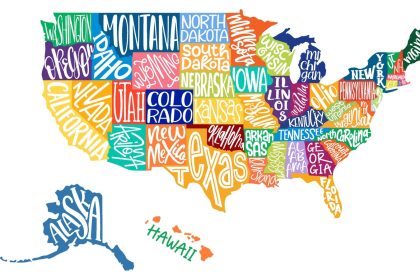If you paid Uncle Sam more than his fair share in payroll taxes in 2023, you may be owed a refund.
In 2023, you would have paid a combined 7.65% in payroll taxes on all employment-based earnings up to the annual limit. But if you worked two relatively high-paying jobs, there’s a chance that a portion of your combined income was subject to payroll taxes when it shouldn’t have been.
This can happen to workers who hold multiple jobs with employers who don’t know to scale taxes based on third-party employment. Here’s what you need to know about getting your money back. And if you need help making your after-tax income work for you, consider speaking with a financial advisor.)
What Are Payroll Taxes?
The payroll or FICA tax comprises two primary components: the Social Security tax and Medicare tax Workers pay 6.2% in Social Security tax and another 1.45% in Medicare tax, for a combined flat rate of 7.65% on all eligible income. Employers then pay a matching 7.65% tax on eligible income for each employee. Self-employed individuals pay both sides of this tax, for a combined 15.3% tax rate known as the self-employment tax.
For example, say that you have a salary of $100,000. You would owe $7,650 in FICA taxes and your employer would also owe $7,650 on your behalf.
Social Security taxes are applied to all income and earnings up to an annual cap, which is adjusted each year for inflation. In 2024, this cap is set at $168,600 (up from $160,200 in 2023). That means you won’t owe any Social Security tax on income above this limit. The Medicare tax, on the other hand, has no income cap and applies to all earned income.
Finally, high-earning individuals are subject to the Additional Medicare Tax, an extra 0.9% applied to all income above $200,000 ($250,000 for married couples filing jointly).
For example, say that you earned $250,000 in employer-based income in 2023. You would have paid the following in FICA taxes:
- Social Security Tax: $9,932 ($160,200 * 6.2%)
- Medicare Tax: $3,625 ($250,000 *1.45%)
- Additional Medicare Tax: $450 ([$250,000 – $200,000] = $50,000 * 0.9%)
- Total FICA Taxes: $14,007
How Can You Overpay FICA Taxes?

Any employer is required to withhold an employee’s FICA taxes and pay a contributory amount. Depending on the circumstances, this can lead to a worker paying too much Social Security tax or total FICA taxes.
Overpaying Social Security taxes occurs most often when a worker has multiple streams of income. An employer will withhold FICA taxes based on the worker’s salary or wages, without knowing about any external sources of income. This can lead to a worker earning more than the Social Security tax’s annual cap and paying taxes on the entire amount.
Overpaying combined FICA taxes occurs most often in situations known as “misclassification.” This is when an employer engages a self-employed worker in the same way as they would an employee, getting the value of an employment relationship (typically defined as control, access and exclusivity) without paying the related taxes. The result is that a worker overpays their FICA taxes by 50% – the amount that their employer should have paid on their behalf.
For example, say that you have two jobs, each paying you $100,000 per year. Each employer would likely withhold the full 6.2% in Social Security taxes, as both income streams would be below the tax’s cap. However, the result is that you would pay 6.2% on $200,000 in income, well above the cap. But if you need more help sorting out your taxes, consider finding a financial advisor with tax expertise.
What Do You Do If You Overpay FICA Taxes?

If you have overpaid FICA taxes, the remedy will depend on the circumstances.
For misclassified workers, you’ll need to file for unpaid or inaccurately collected FICA taxes with the IRS. Most workers will use Form 8919 to alert the IRS that their income is not subject to the self-employment tax despite a 1099 earnings form.
For workers at risk of overpaying Social Security taxes due to excess earnings, a good first step is to conduct a periodic “paycheck checkup,” essentially confirming that your withholding matches your overall earnings. This can help you determine your correct tax payments during the year, so that you can adjust your withholding with a given employer.
If you’ve already overpaid Social Security taxes and have just one employer who withheld taxes on income above the earnings cap, you can first request a refund directly from your employer. If they fail to return your withheld taxes, you’ll file a Form 843 to request a refund and tax abatement going forward.
If you have multiple employers and had Social Security taxes withheld above the cap based on your combined income, you can file for a refund on line 11 of your annual 1040. This is called a Social Security tax refund. If you’re eligible, the Social Security overage will be applied directly to your income taxes, either reducing your bill or increasing your refund. And if you’re interested in investing this year’s tax refund, a financial advisor can help.
Bottom Line
If you overpaid your Social Security taxes in 2023 due to withholding on net income above the tax’s cap, you can get a refund for the excess payments. For workers who had more than one job, you will typically do this as part of your annual taxes on your 1040.
Tips On Managing Your Taxes
- SmartAsset has several tools that can come in handy as you’re tax planning. While our income tax and tax return calculators can help you estimate your tax liability and/or refund this year, we also have a capital gains tax calculator that can help you approximate how much you could pay in taxes when selling an investment.
- A financial advisor with tax expertise can be a valuable resource throughout the year and at tax time. Finding a financial advisor doesn’t have to be hard. SmartAsset’s free tool matches you with up to three vetted financial advisors who serve your area, and you can have a free introductory call with your advisor matches to decide which one you feel is right for you. If you’re ready to find an advisor who can help you achieve your financial goals, get started now.
Photo credit: ©iStock.com/gorodenkoff, ©iStock.com/designer491, ©iStock.com/visualspace
Read the full article here

















